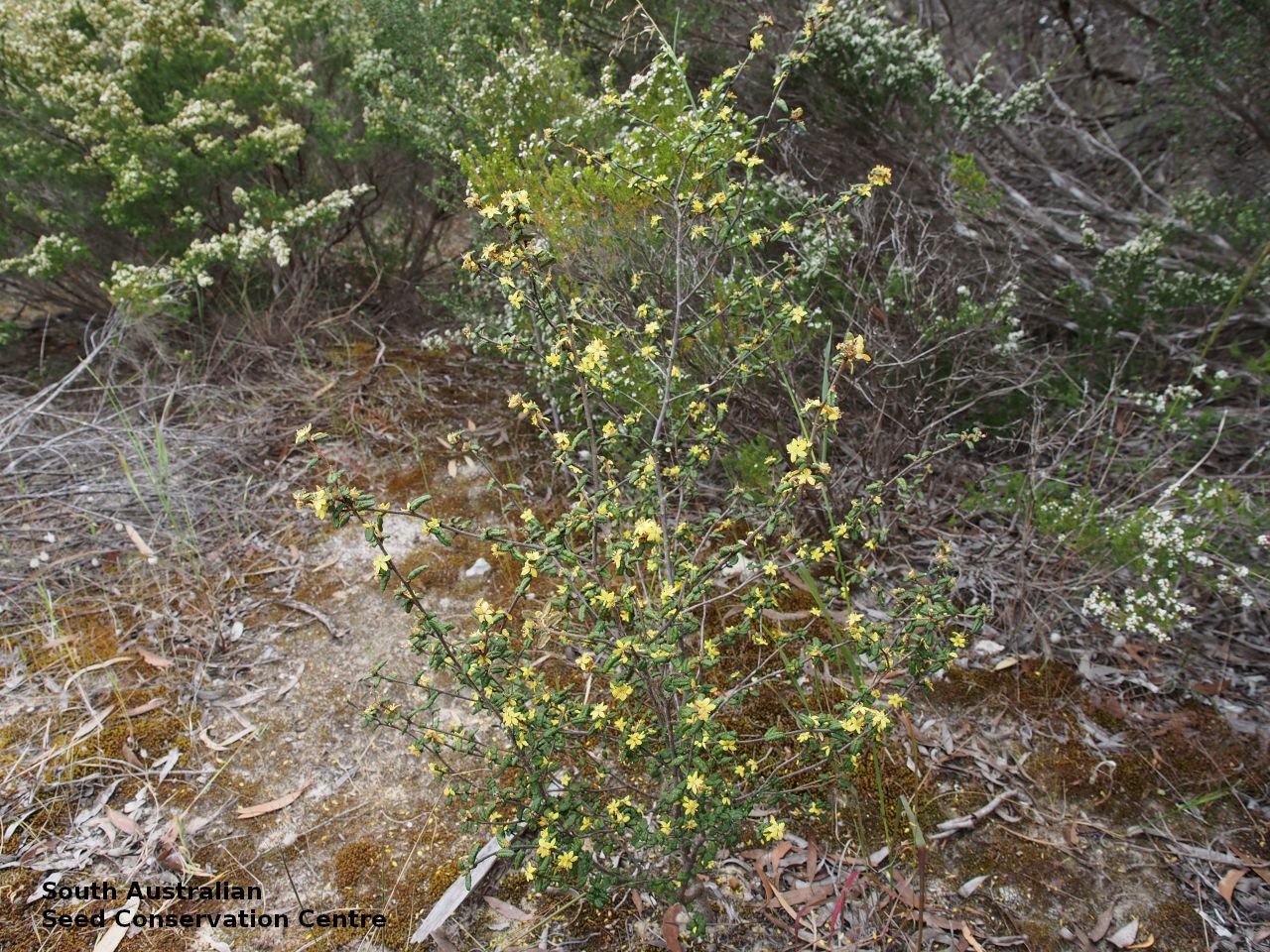
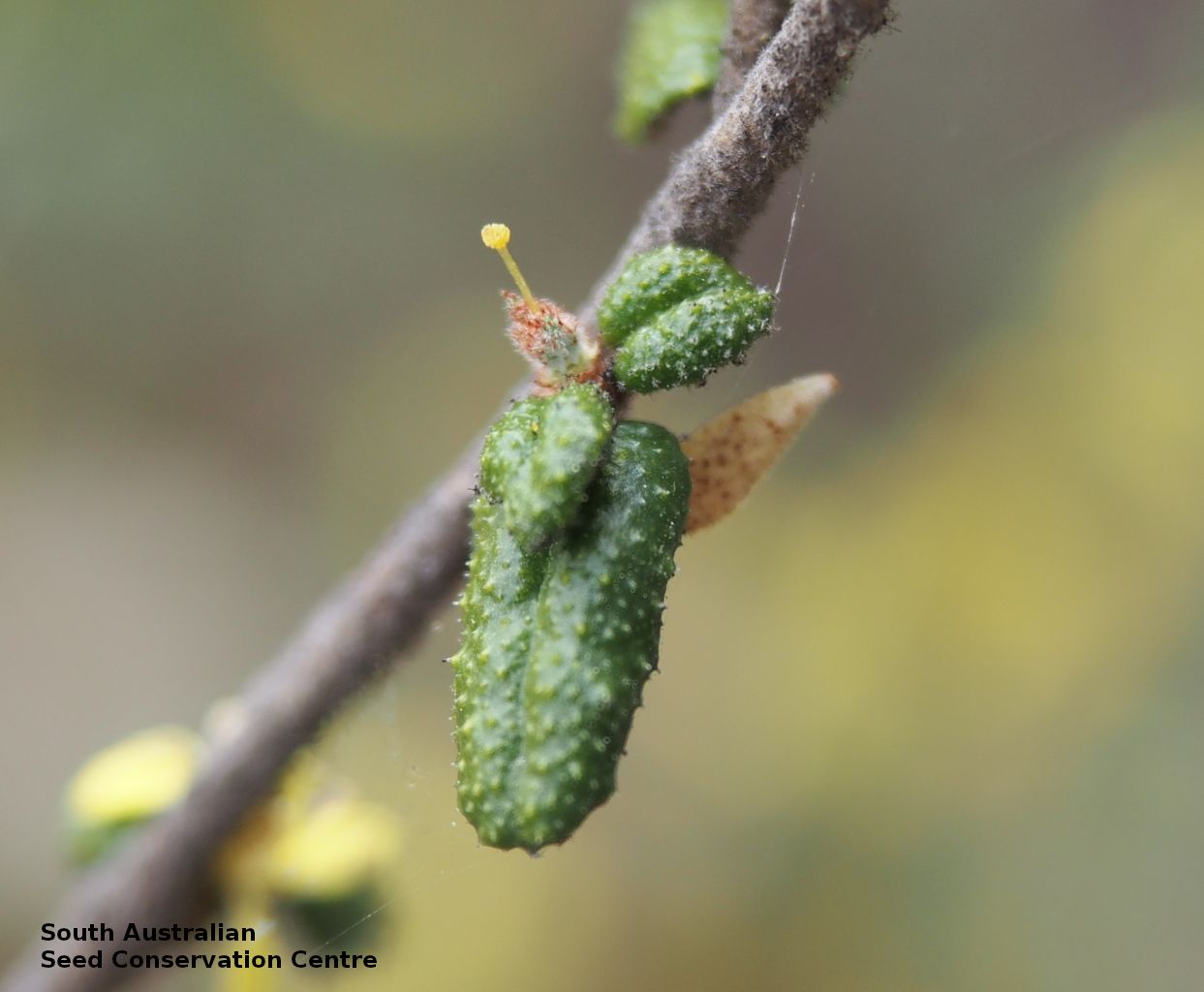
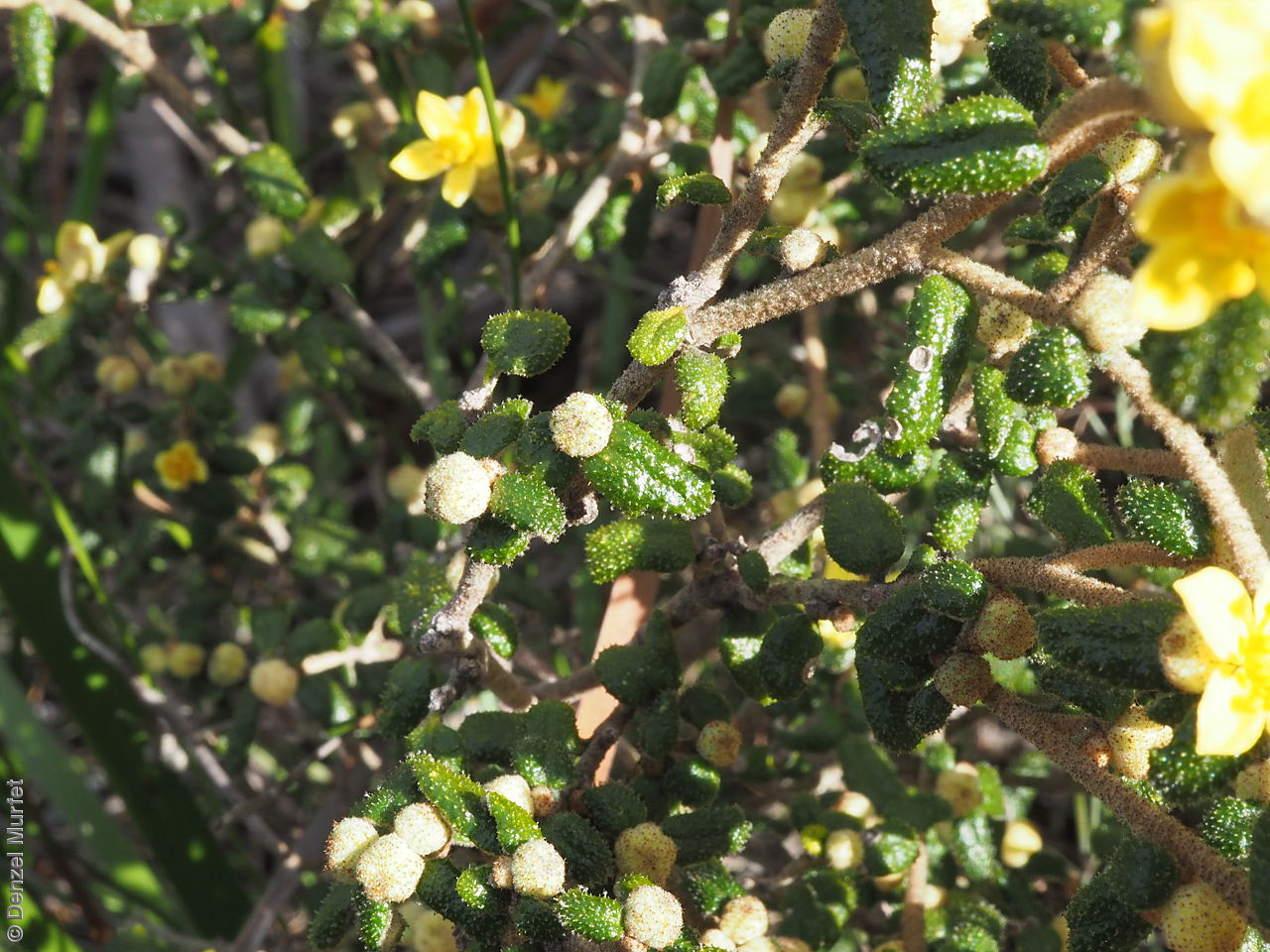
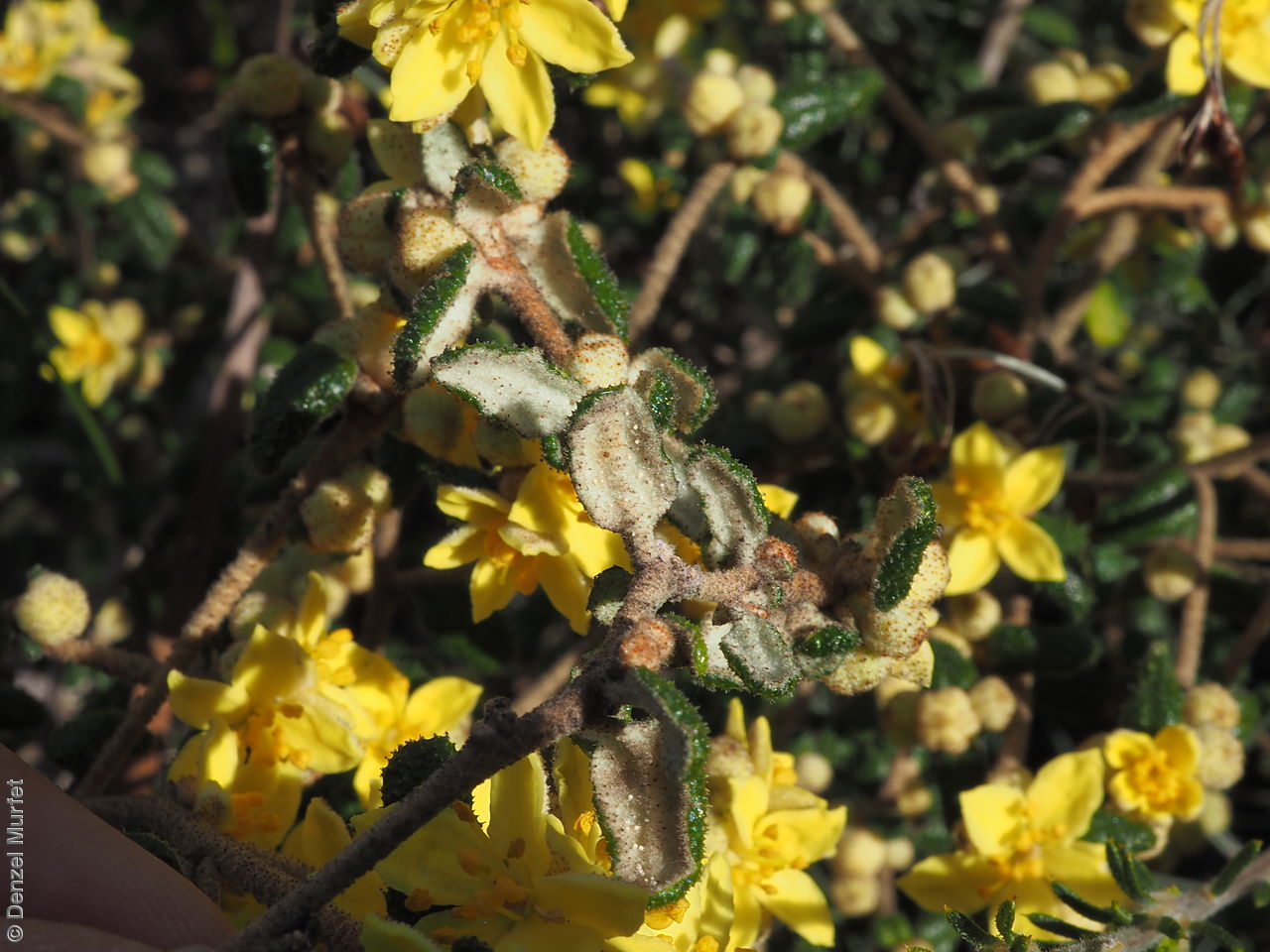
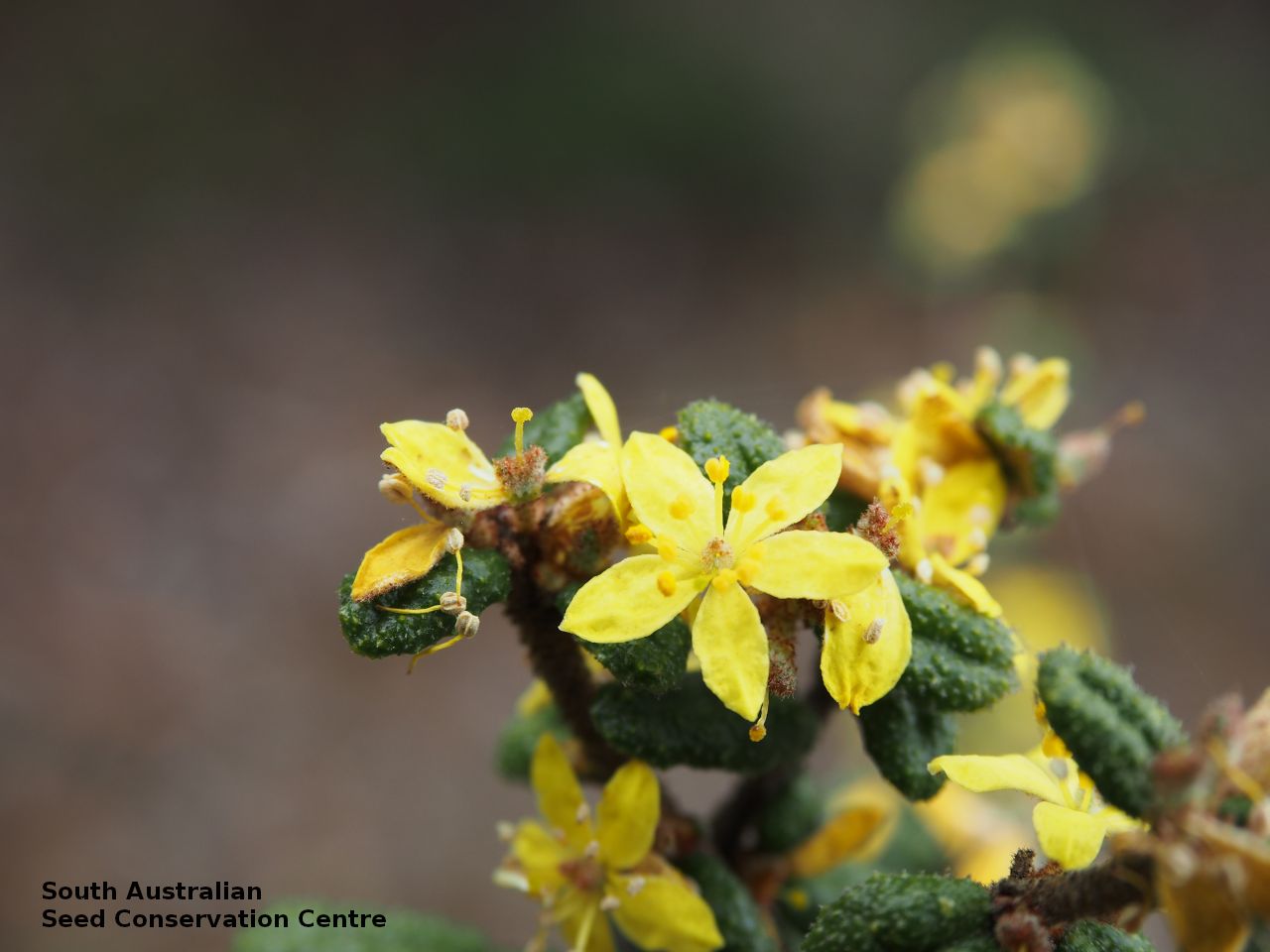
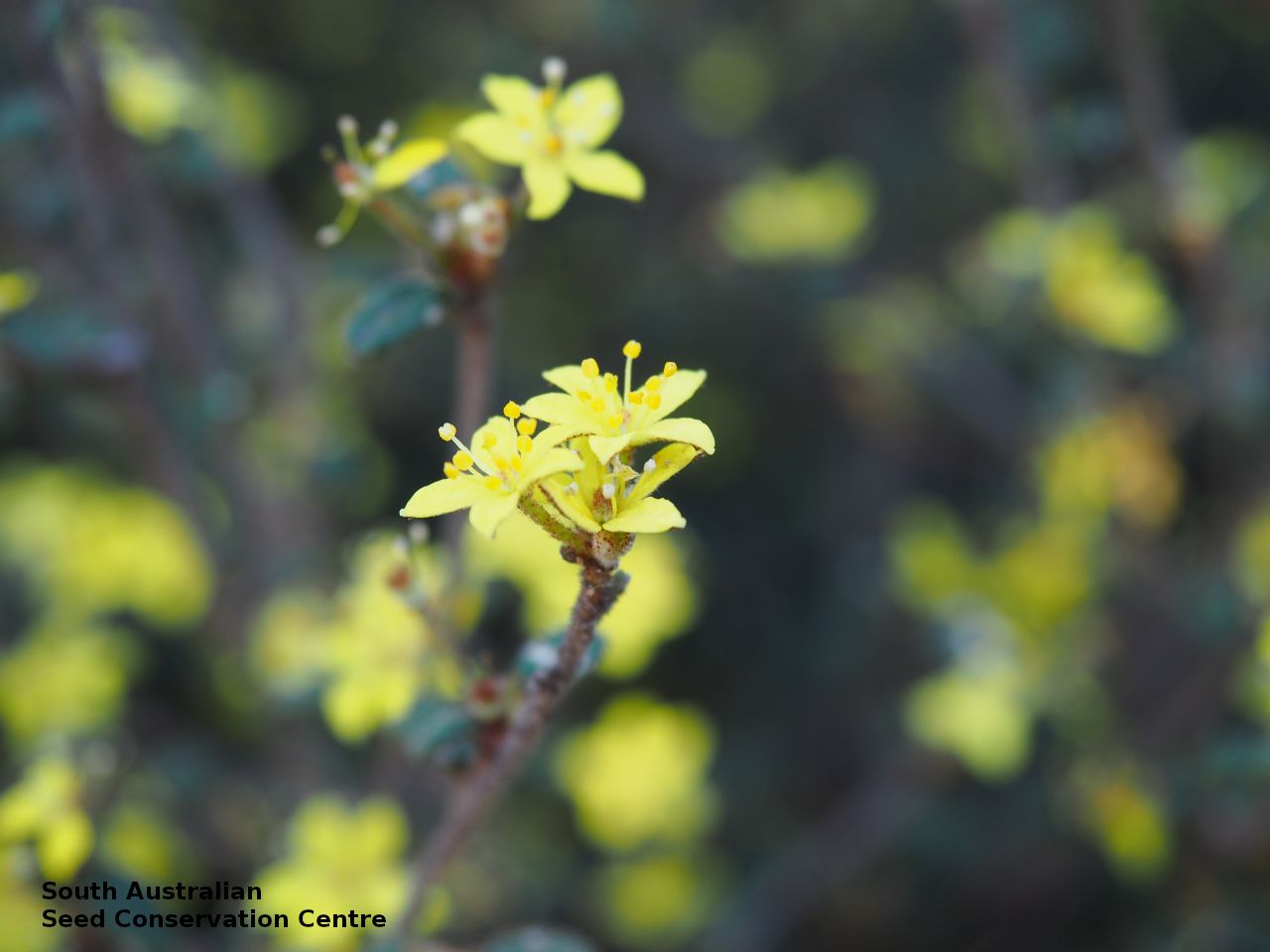
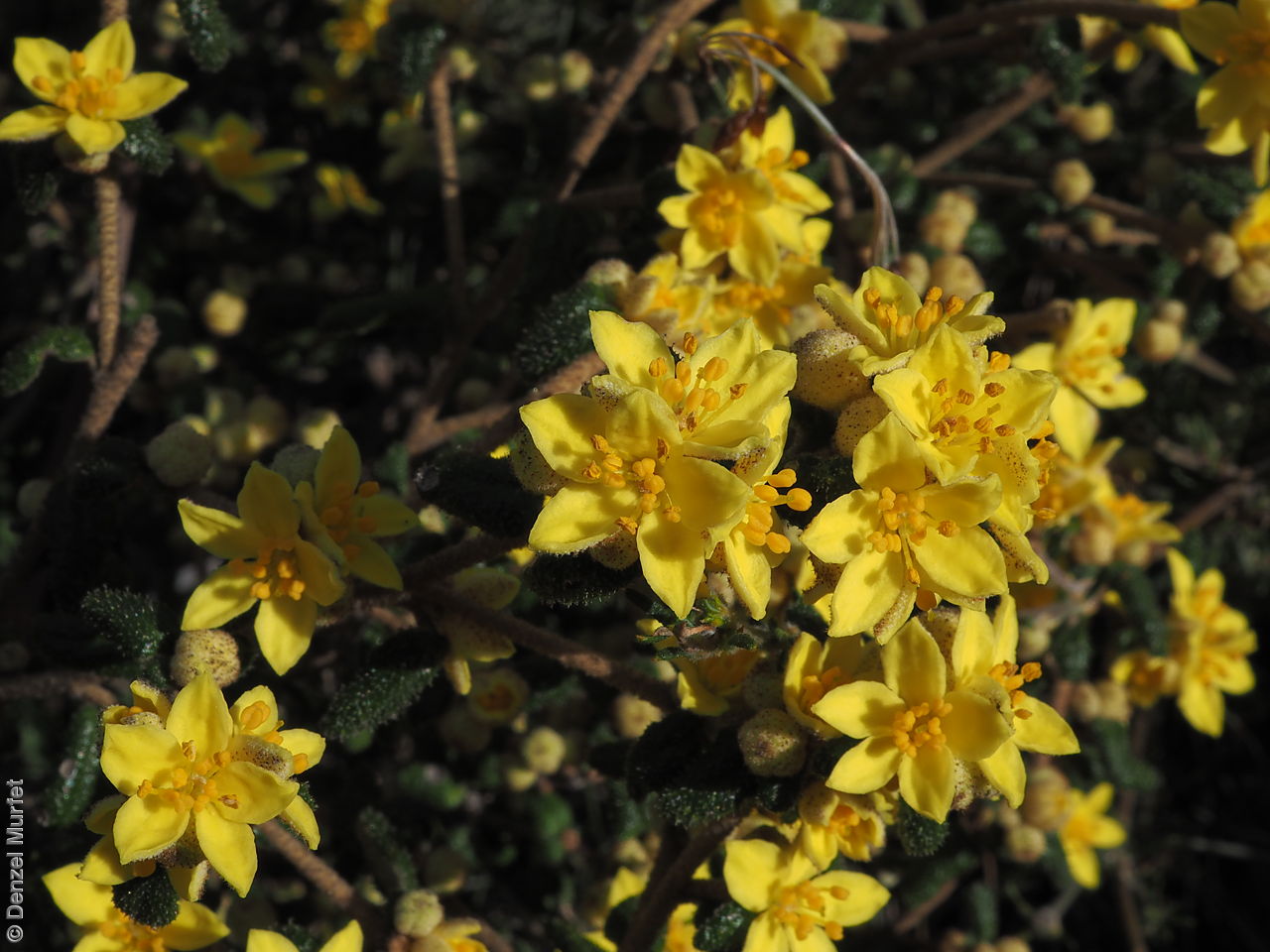
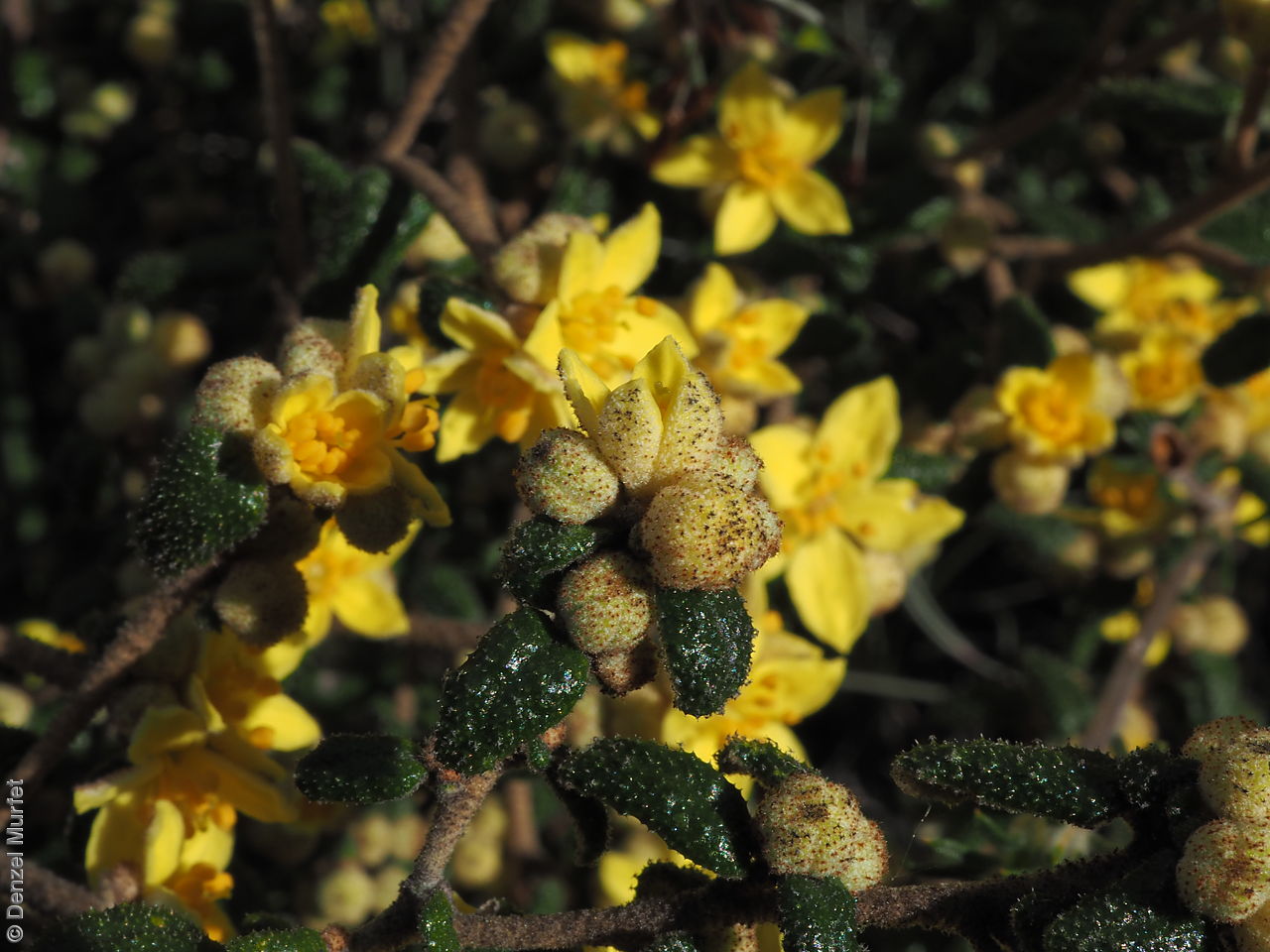
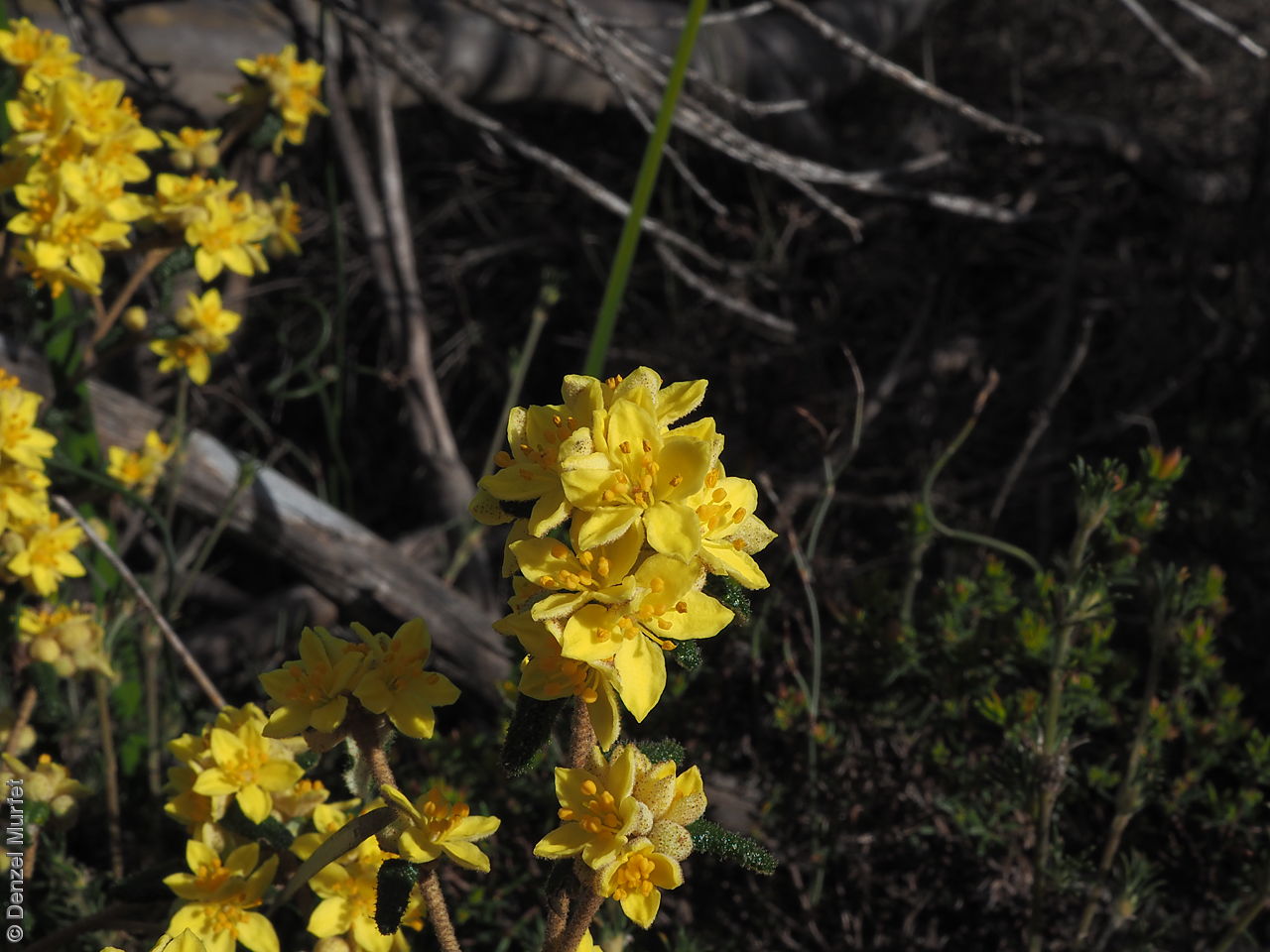
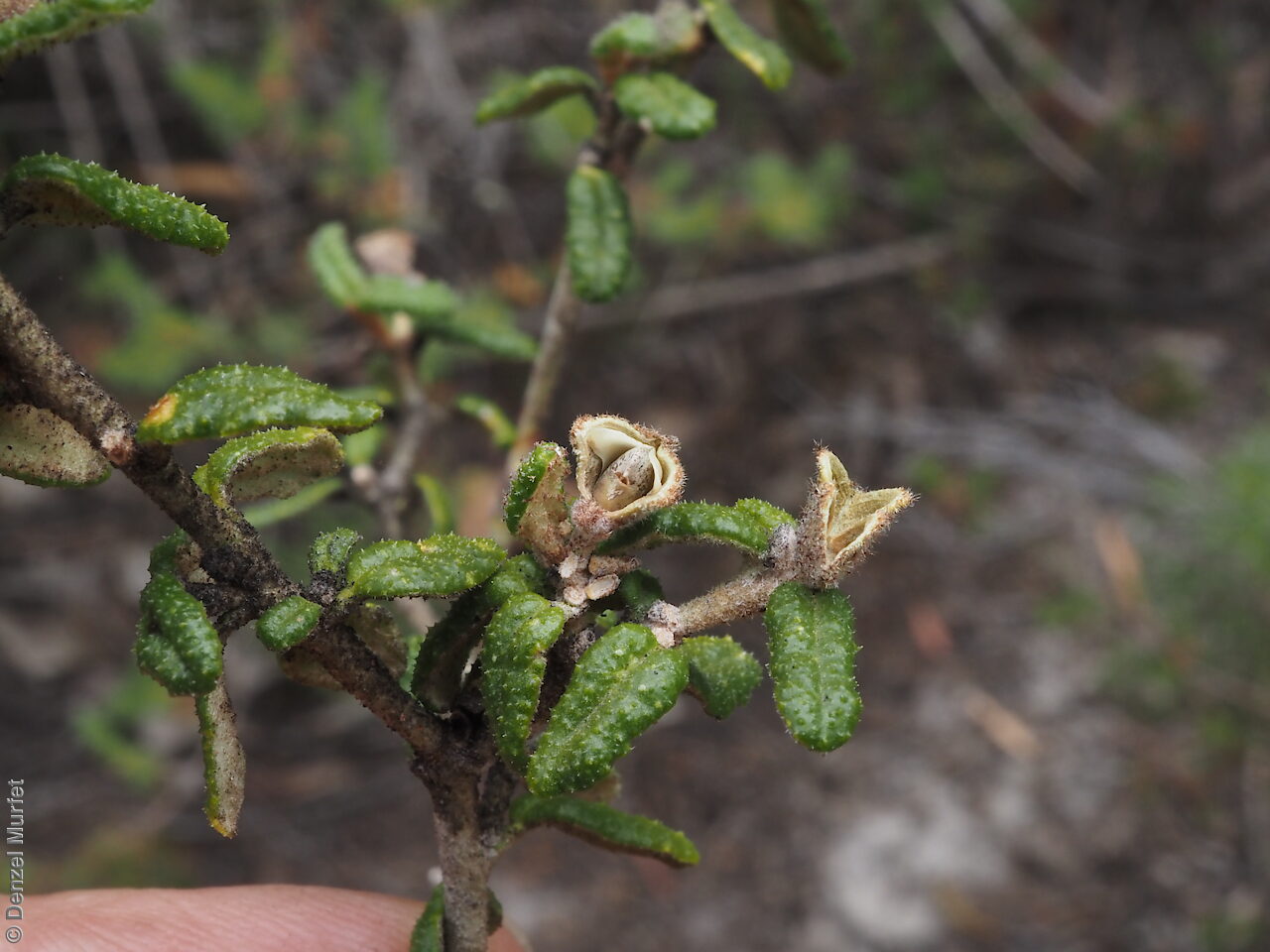
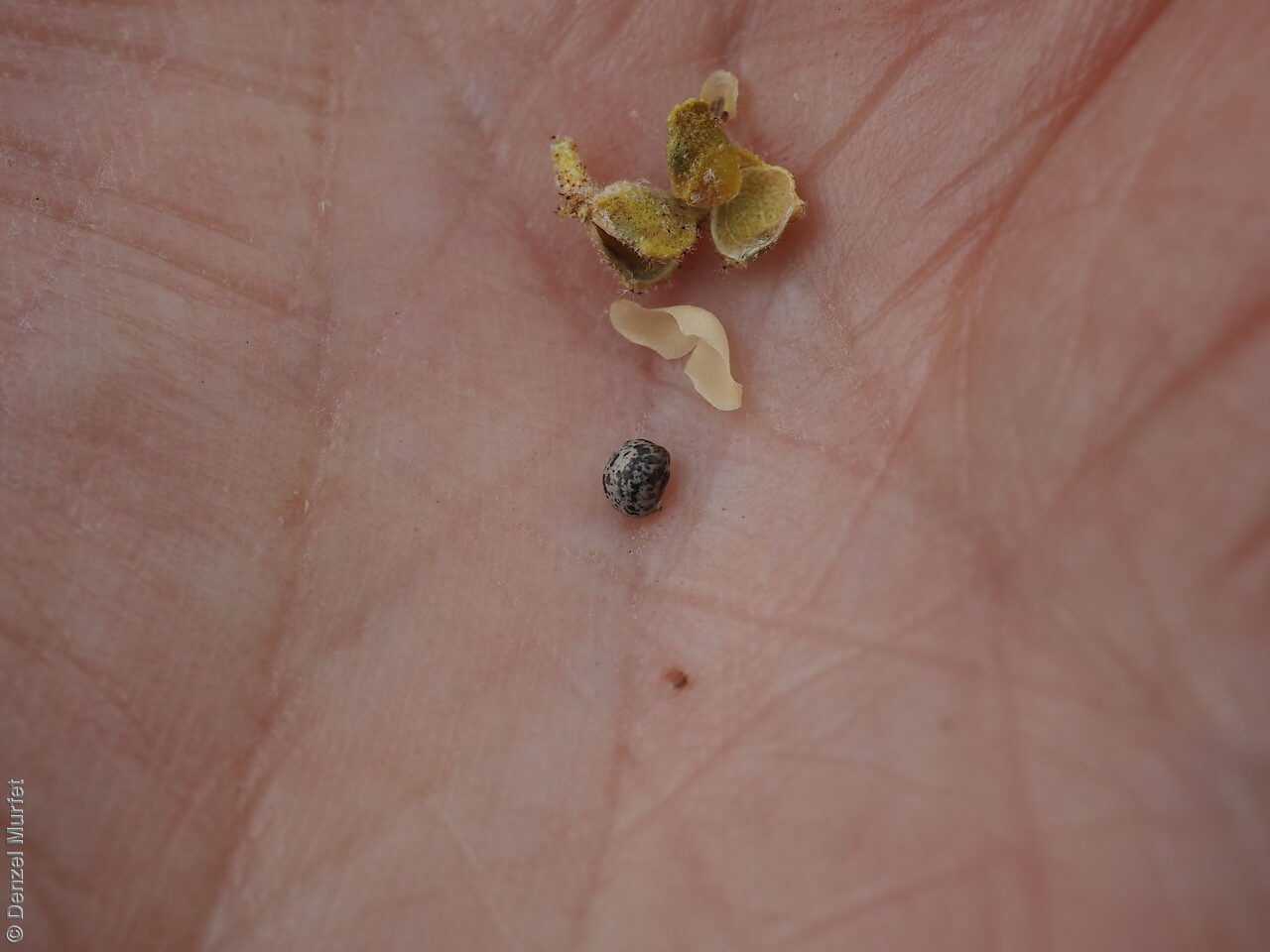
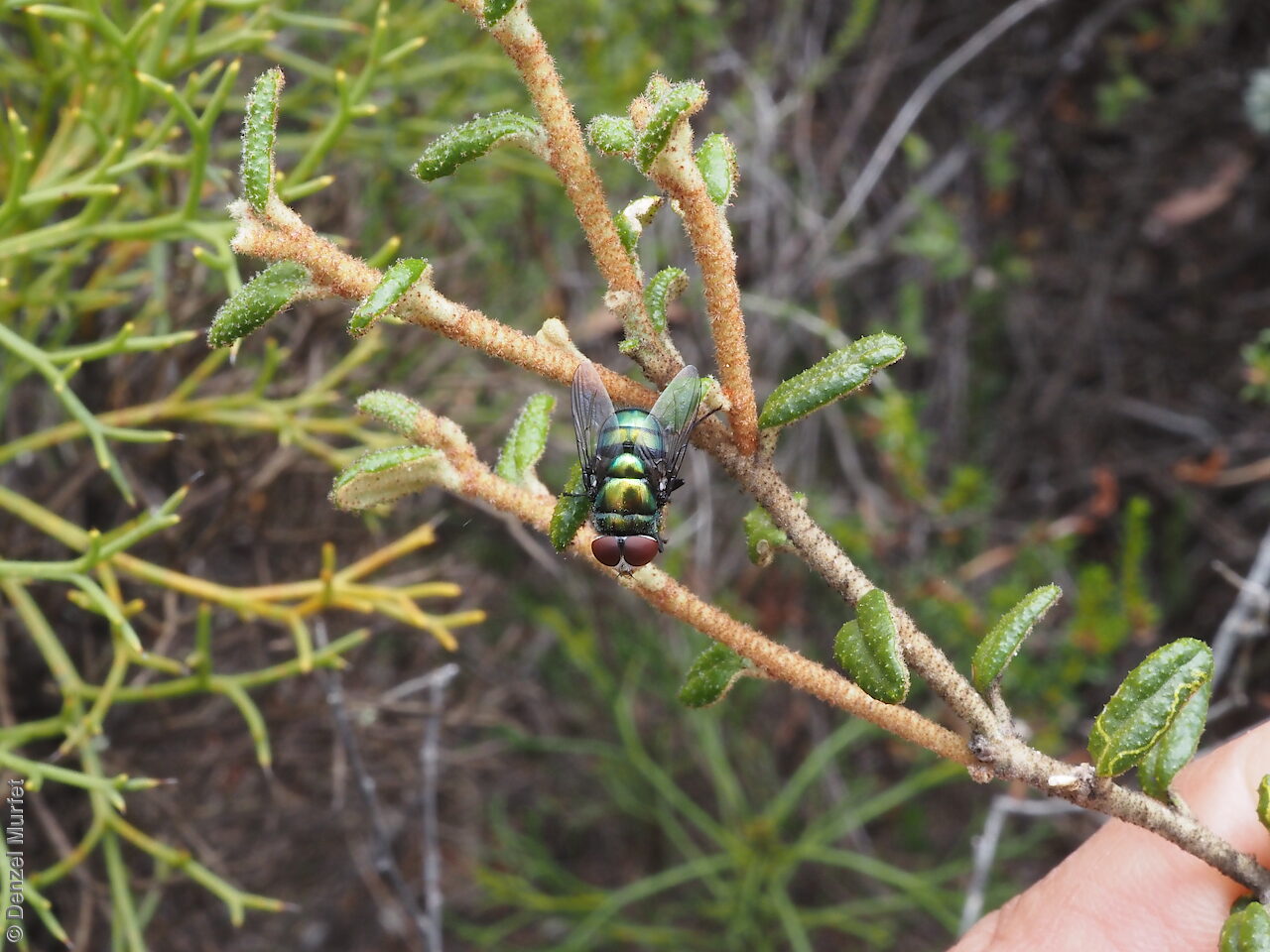
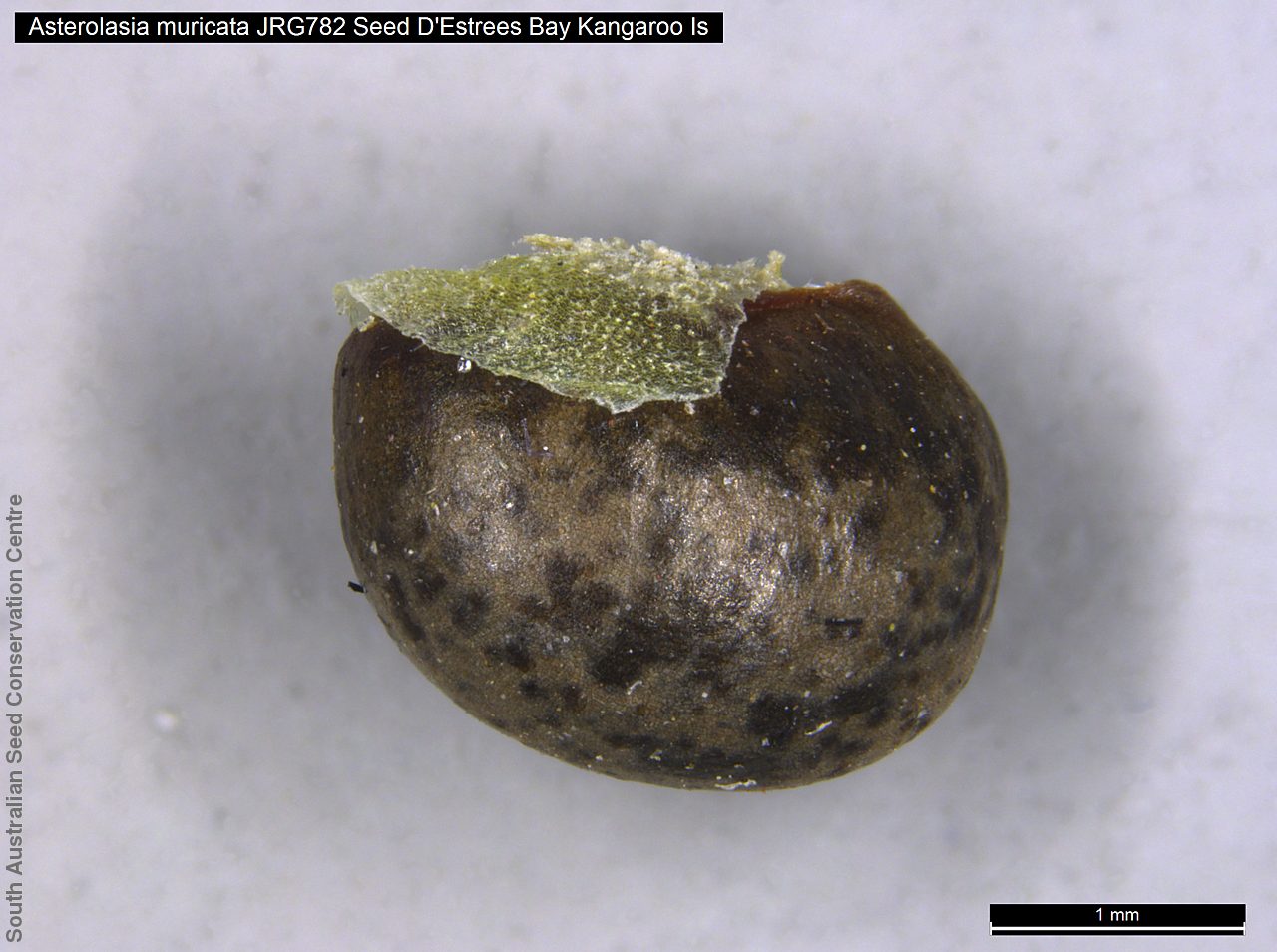
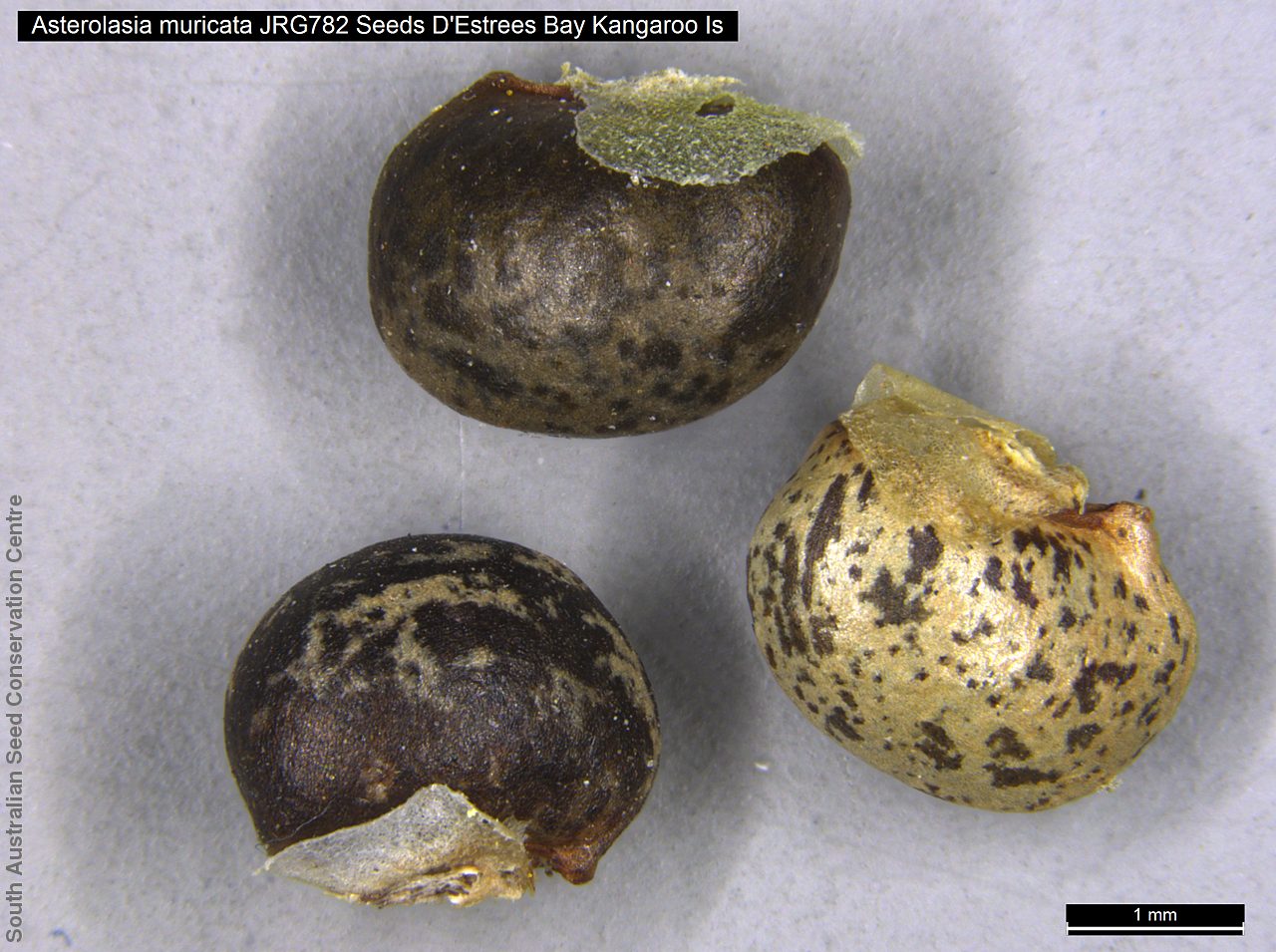
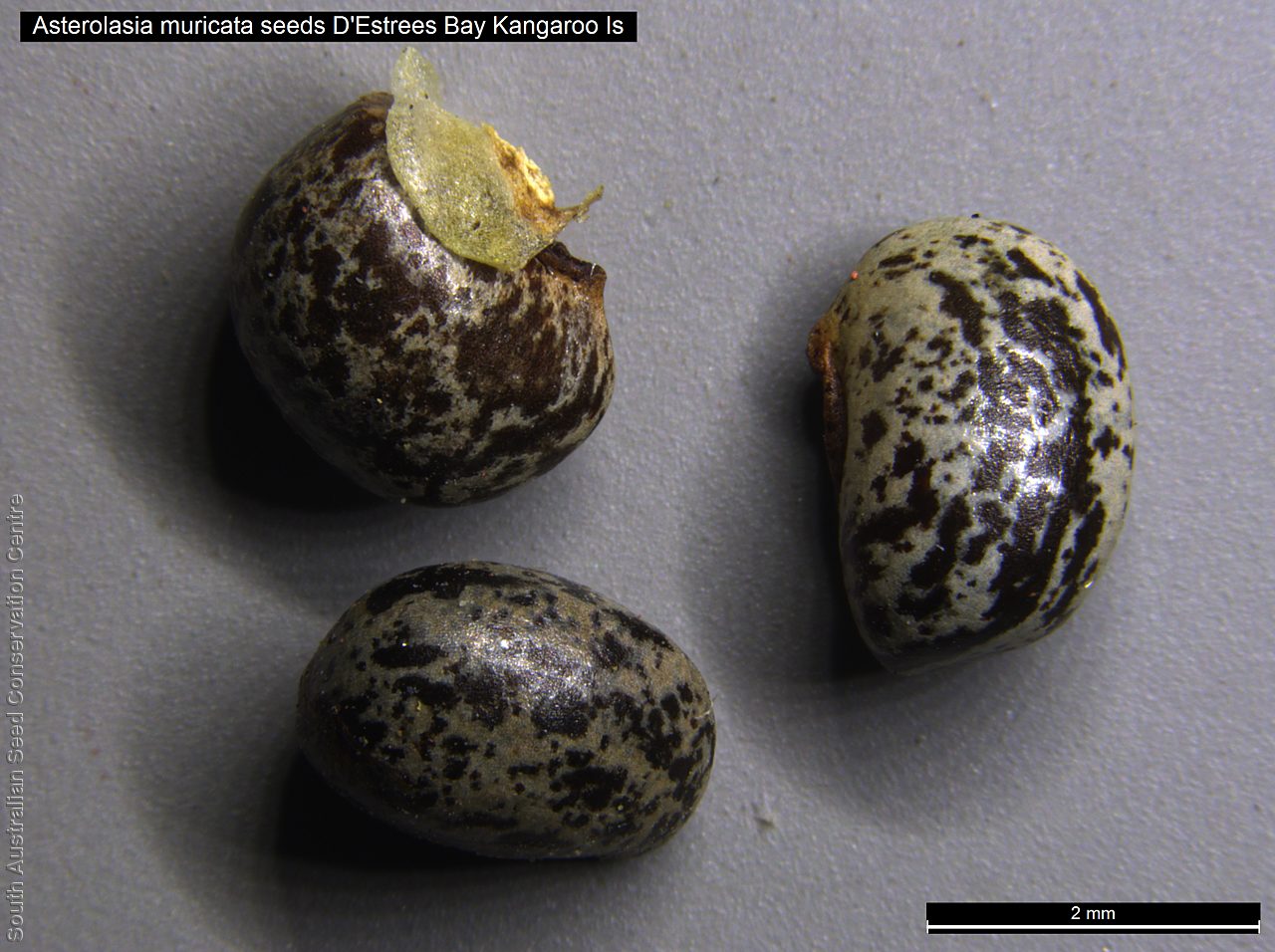
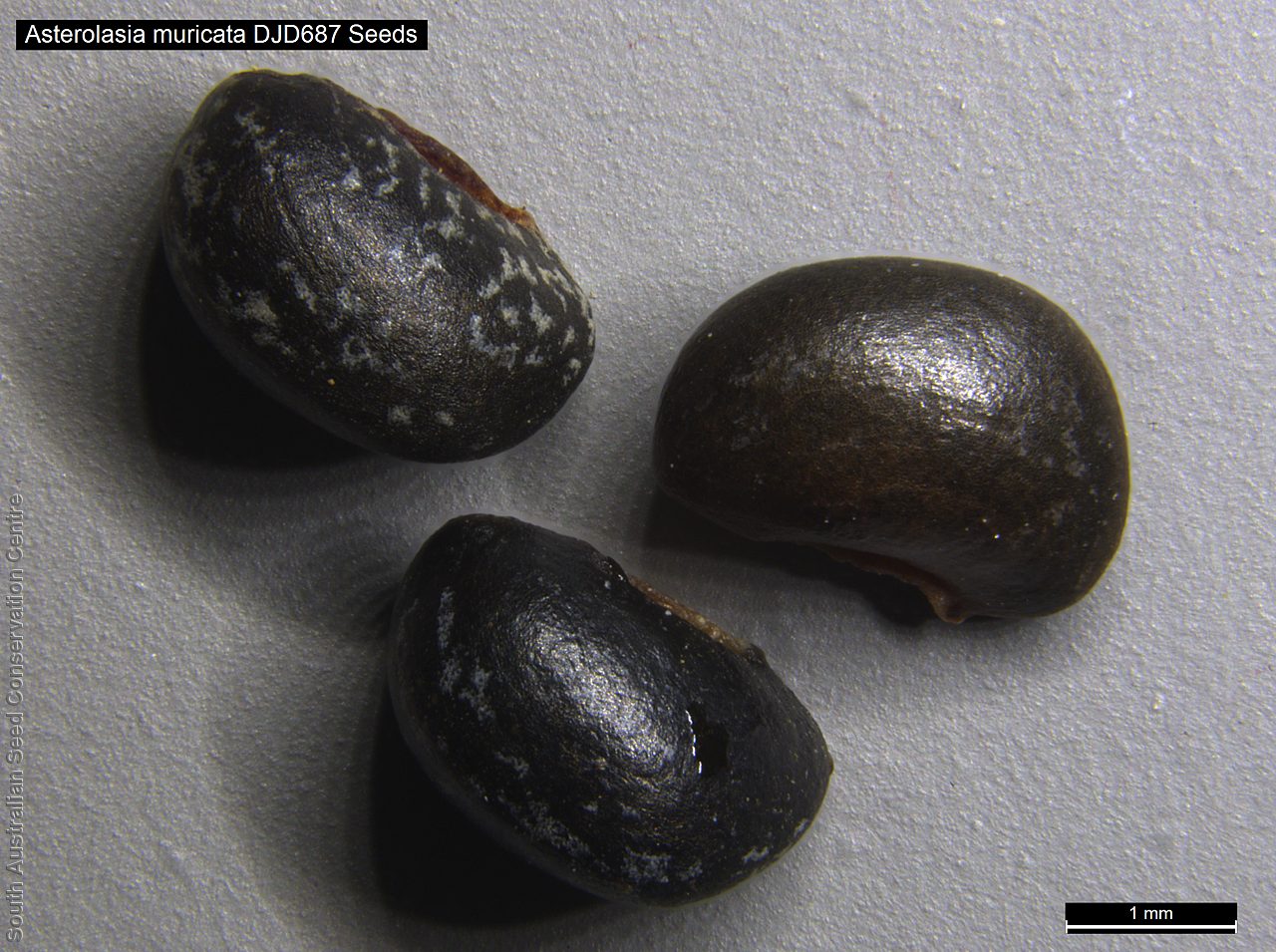
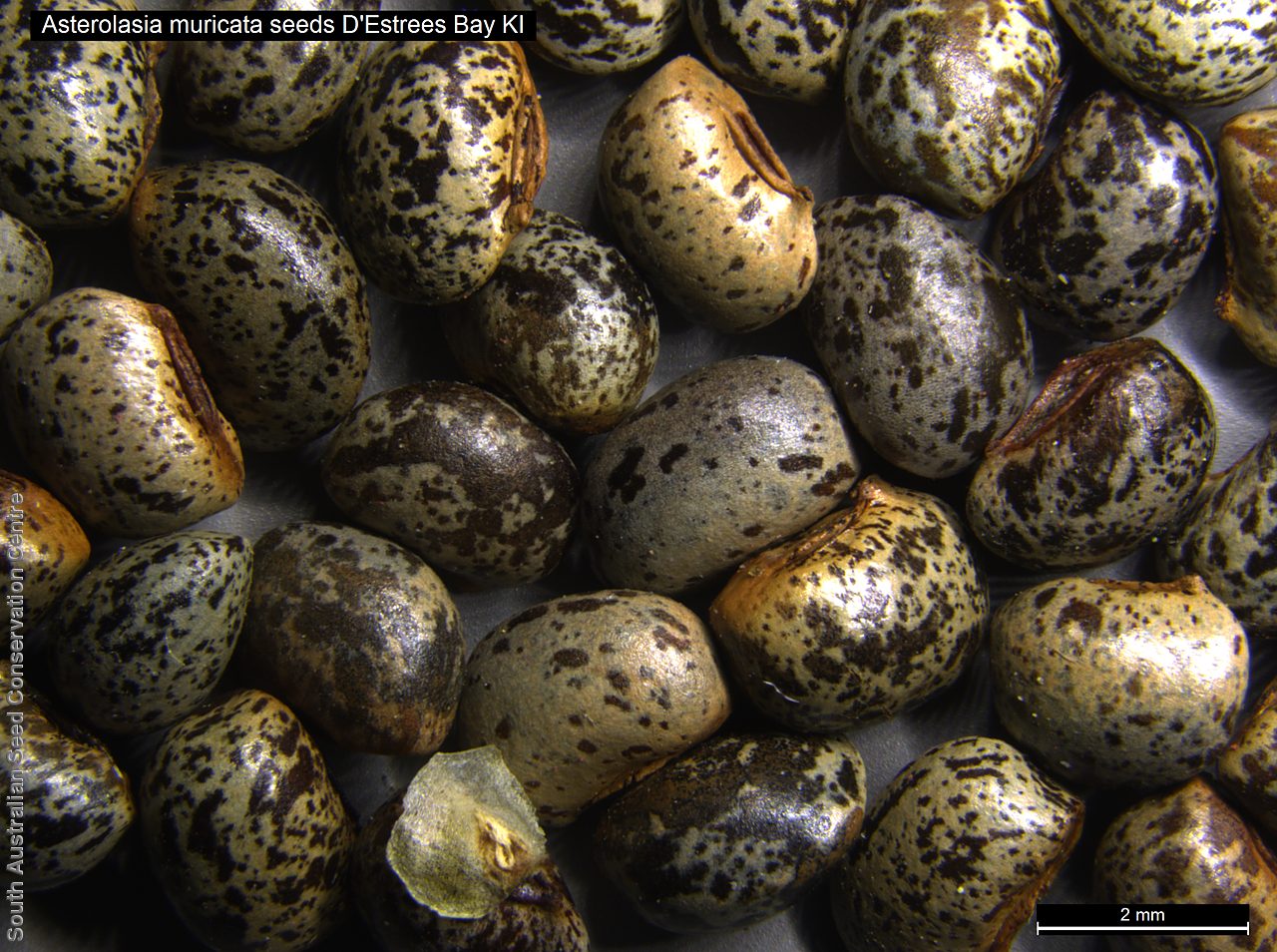
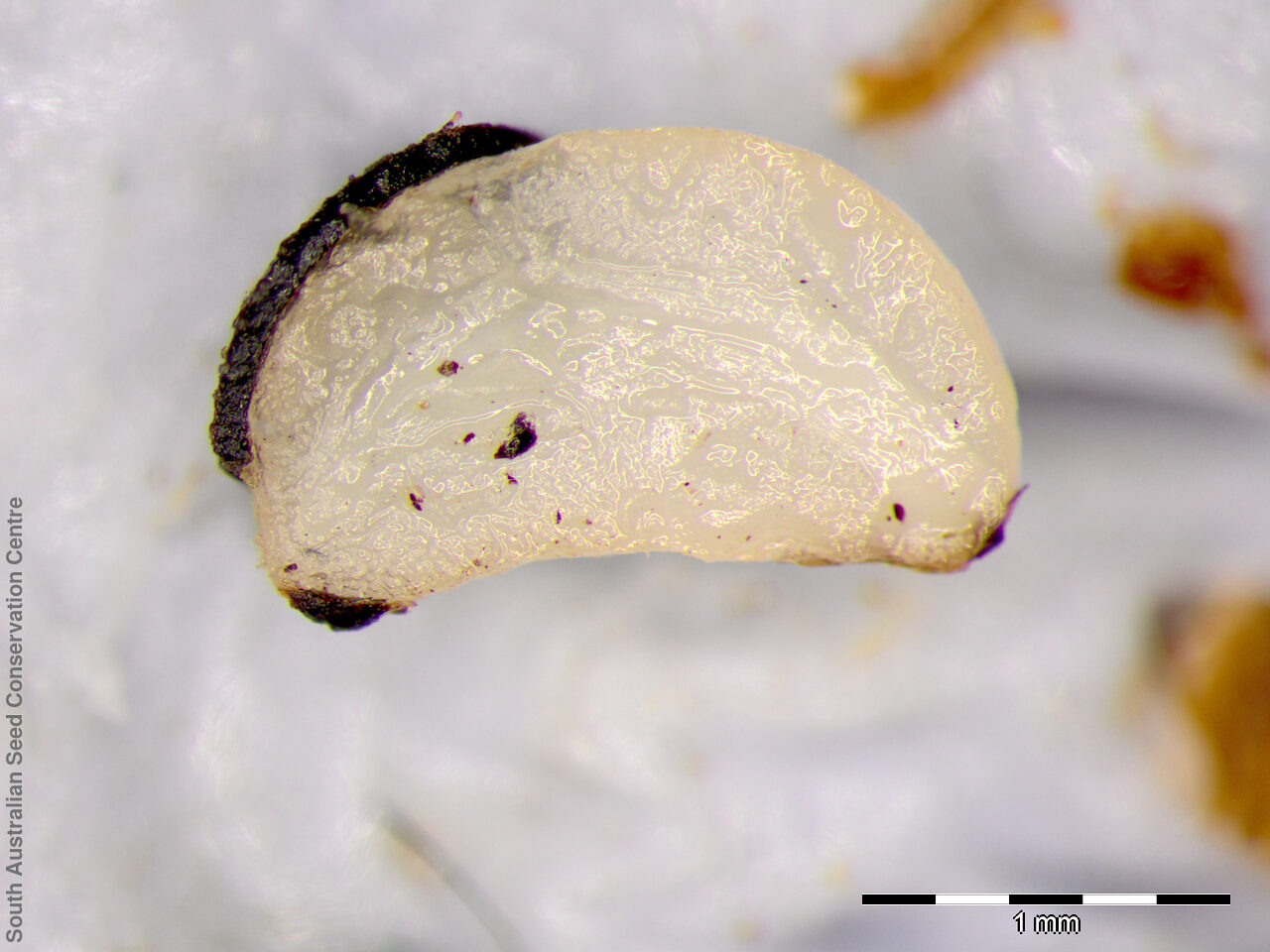
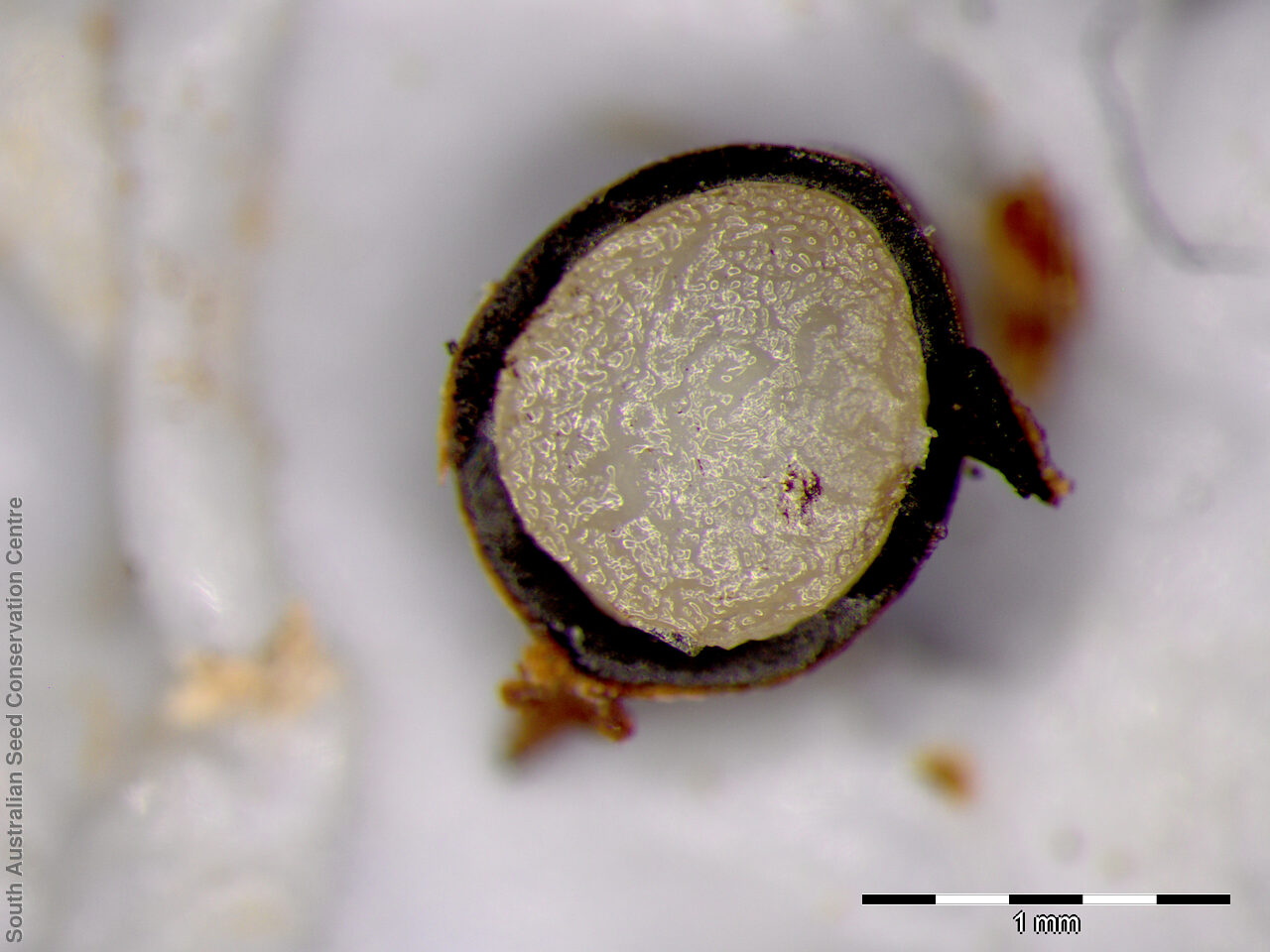
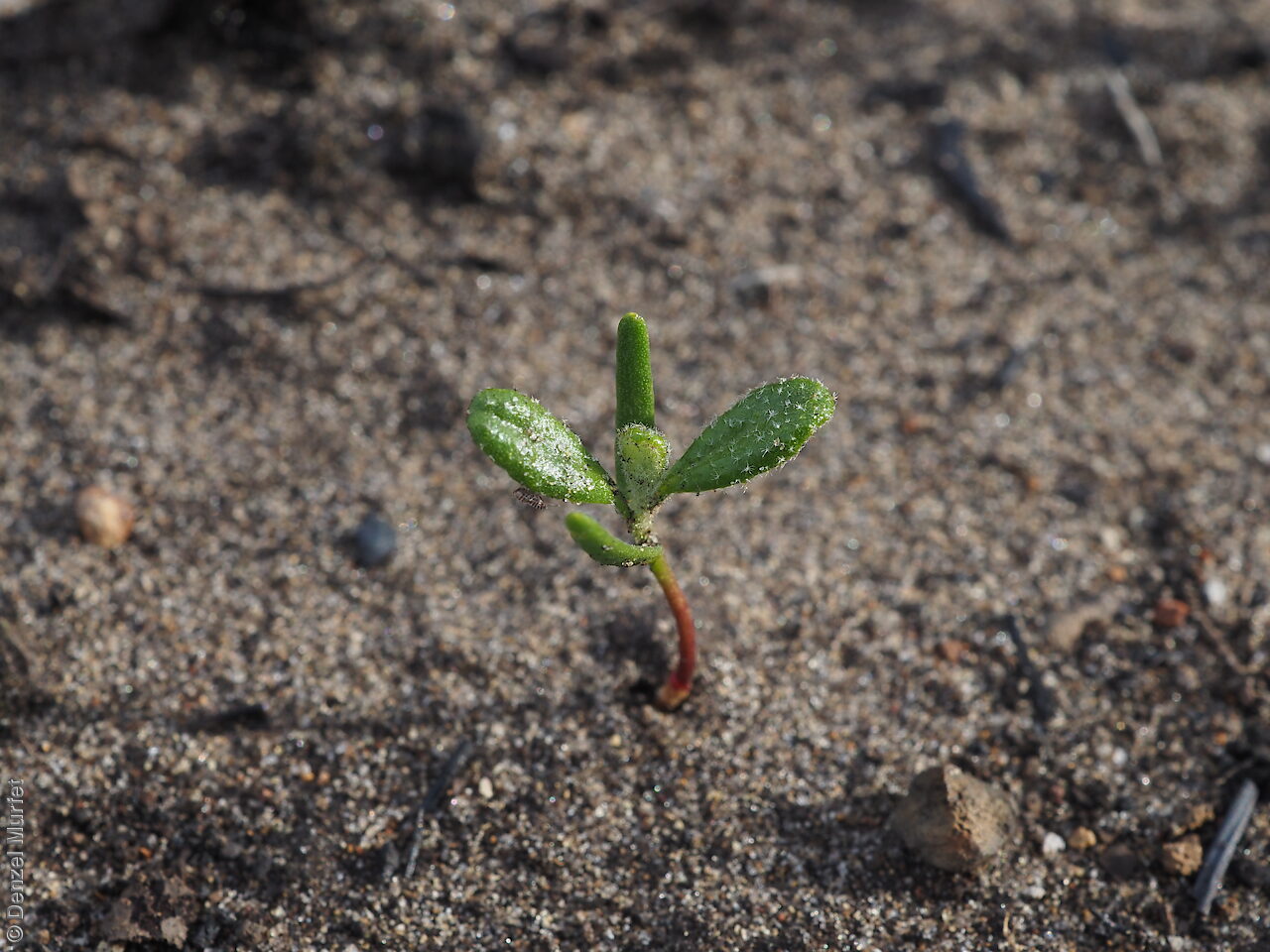
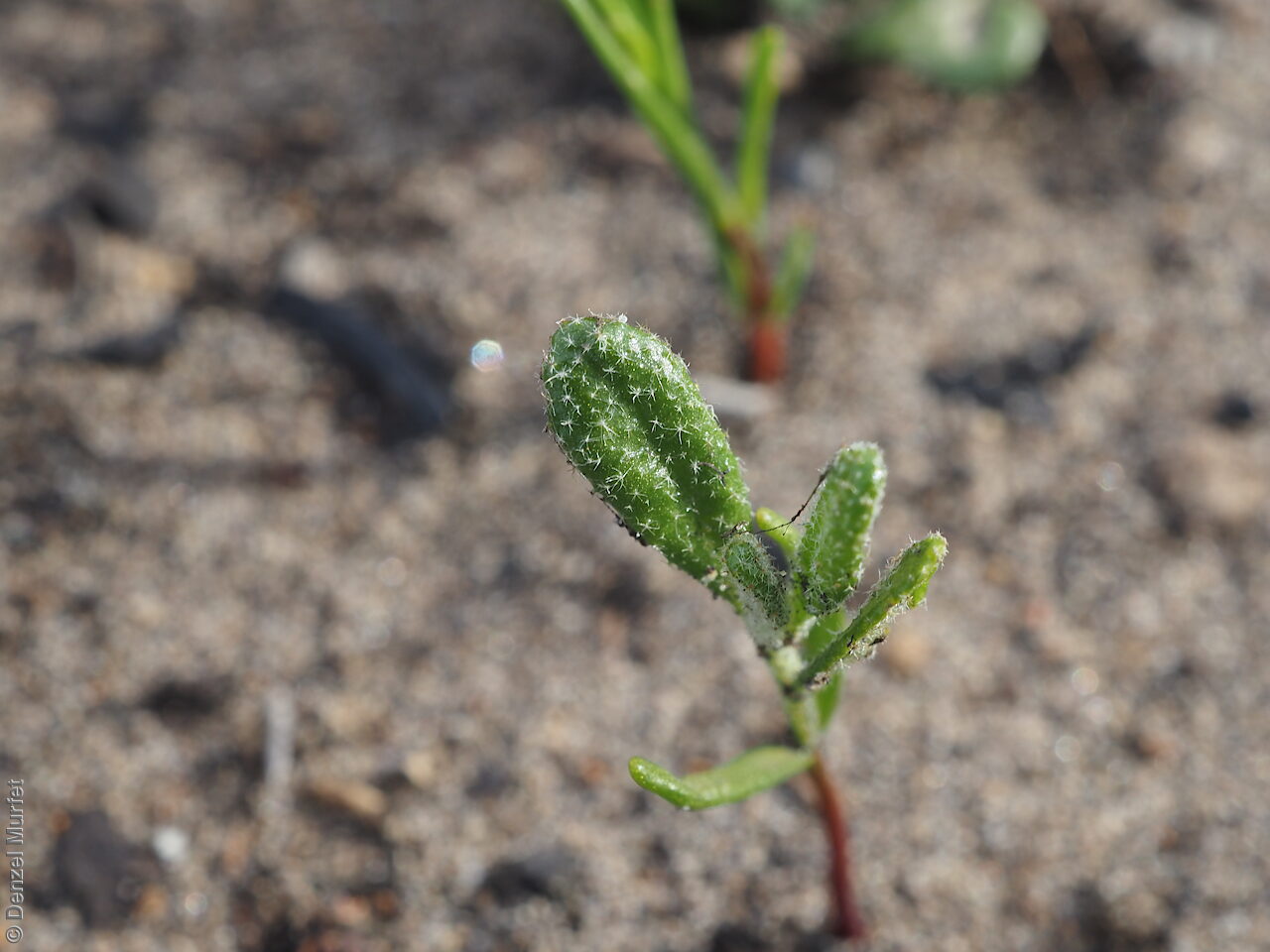
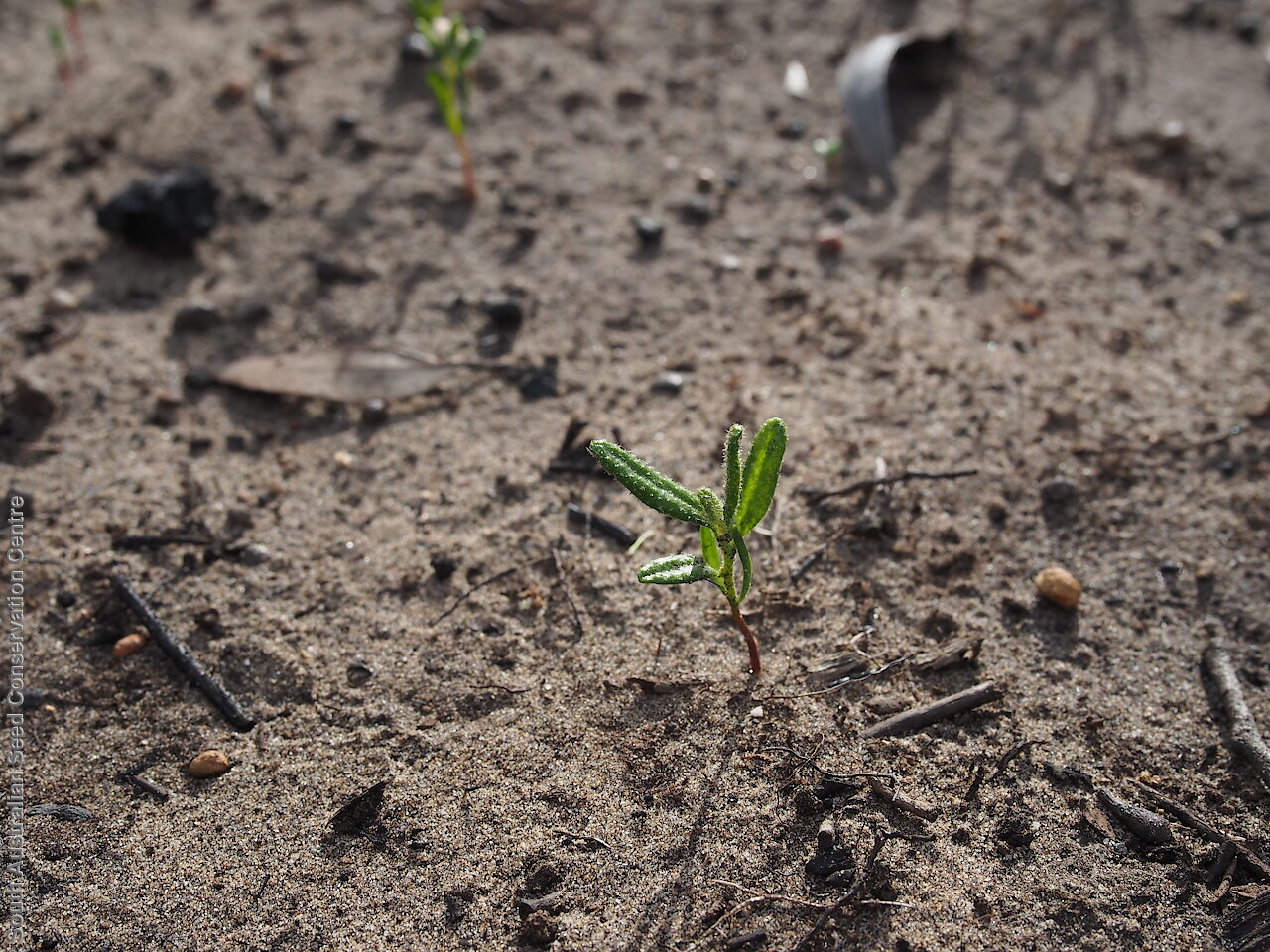
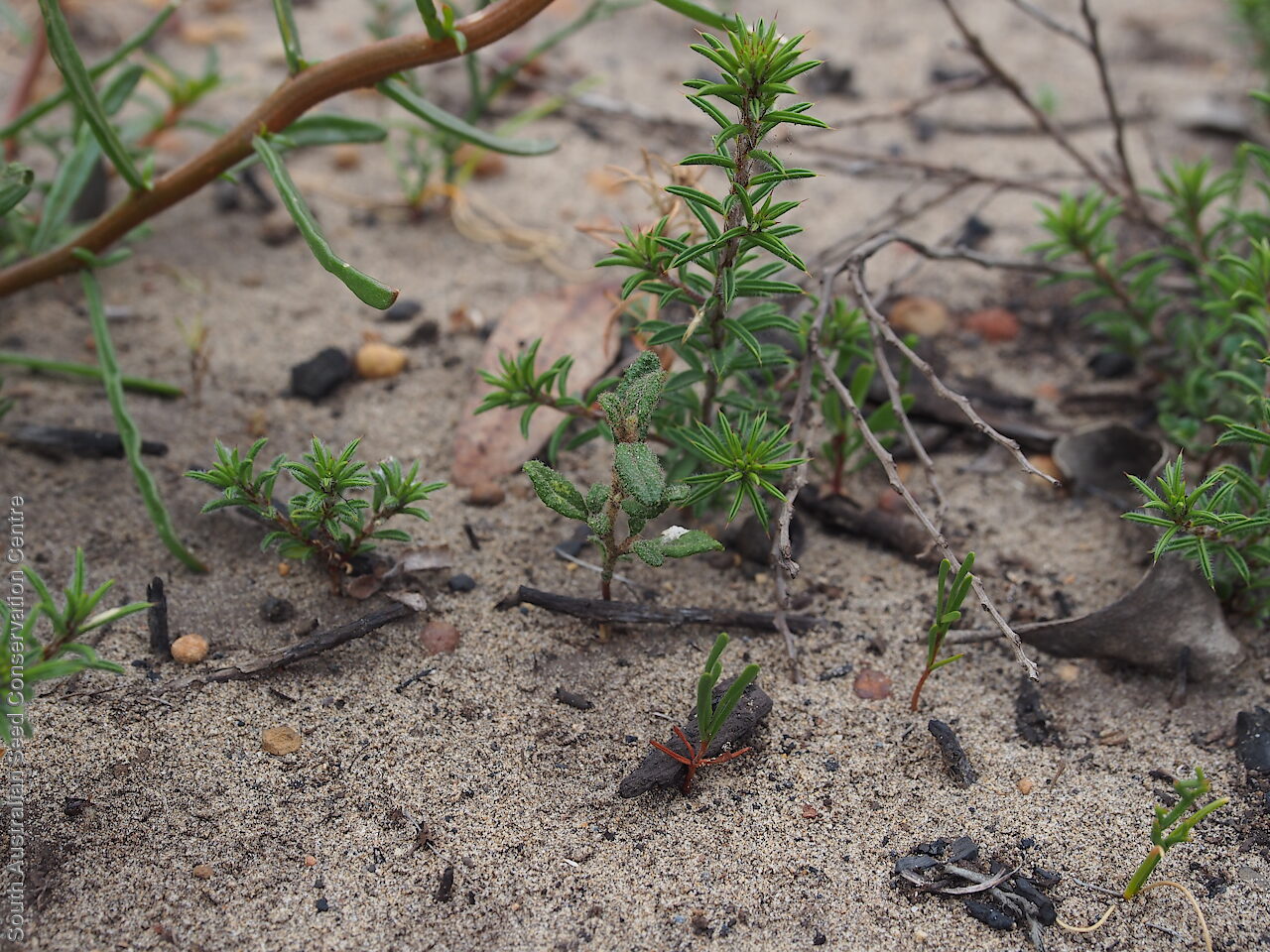
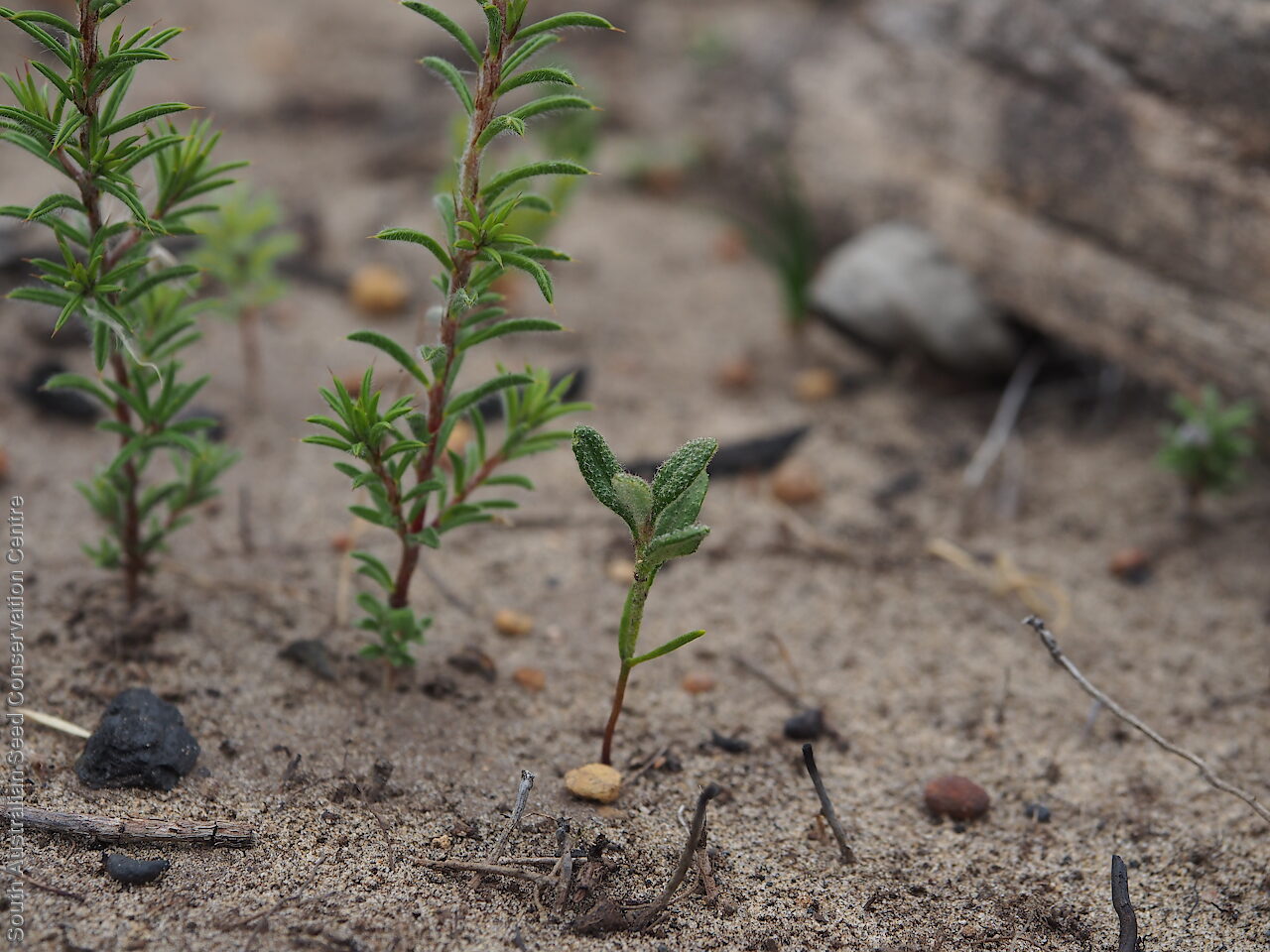
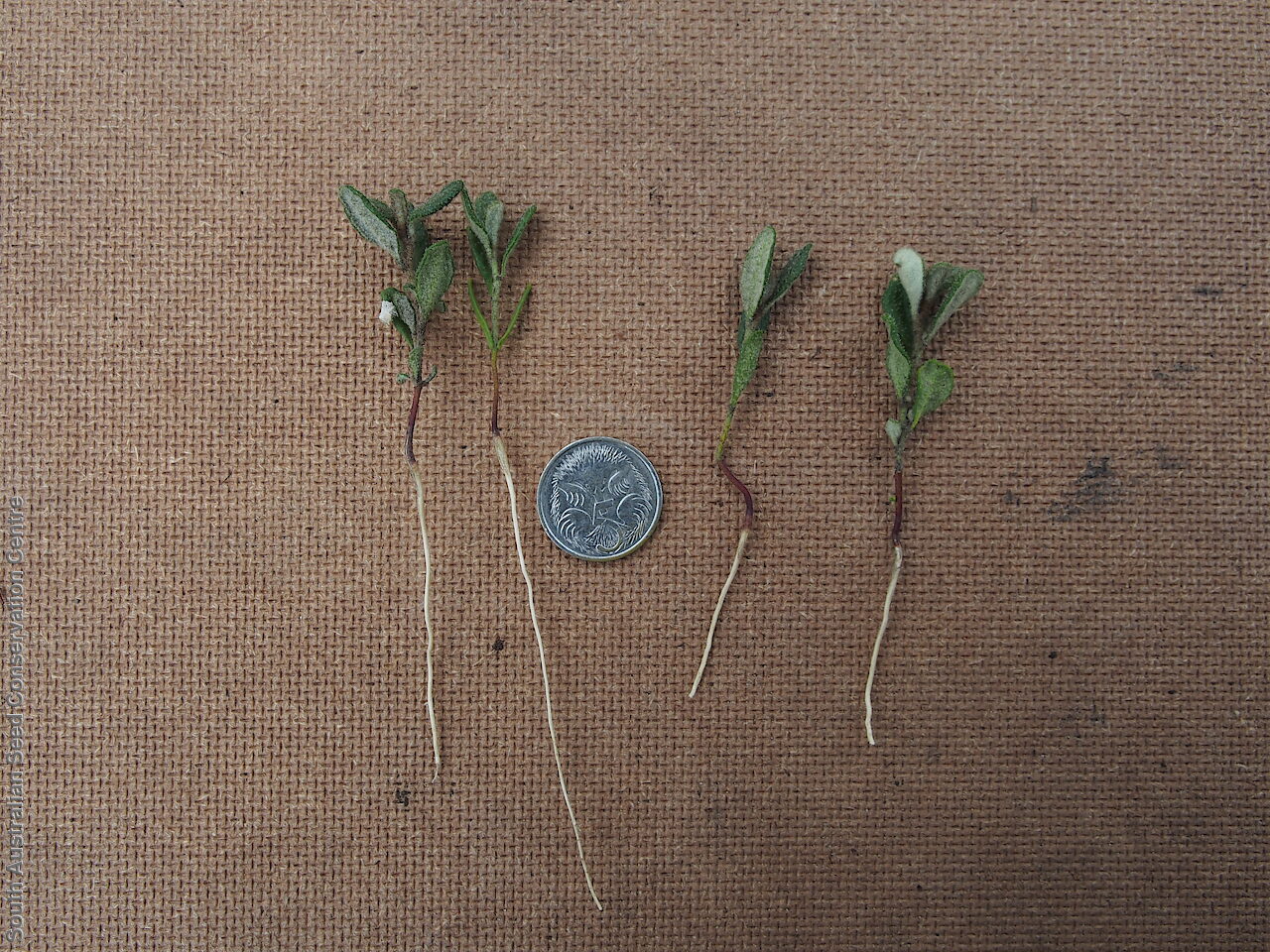

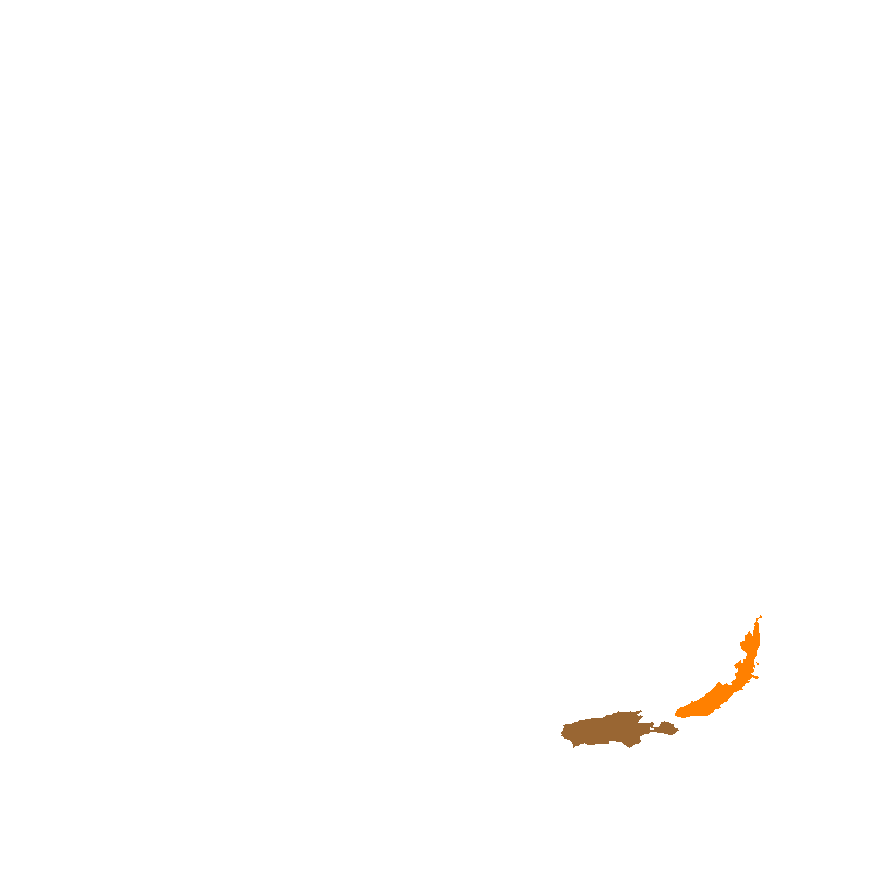
Botanical art
Prior names
Asterolasia asteriscophora ssp. asteriscophora
Urocarpus muricatus
Etymology
Asterolasia from the Greek 'aster' meaning star and 'lasios' meaning hairy, referring to the stellate tomentum on the leaves. Muricata meaning minutely rough, from the Latin 'murex' meaning shell-fish, referring to the rough texture of the leaves.
Distribution and status
Endemic to South Australia and found mainly on Kangaroo Island with a small population on the Fleurieu Peninsula growing in shrubland on lateritic and sandy soils. Native. Very rare in South Australia.
Herbarium regions: Southern Lofty, Kangaroo Island
NRM regions: Adelaide and Mount Lofty Ranges, Kangaroo Island
AVH map: SA distribution map (external link)
Plant description
Small slender shrub to 1 m high. Branches with dense silvery hairs. Leaves oblong to 14 mm long, muricate above, stellate-tomentose below. Flowers yellow, in the leaf axils. Flowering between August and November. Fruits are brown papery-capsule with a number of segments, each containing a seed. Seeds are black or mottled bean-like seed to 3 mm long and 1.5 mm wide. Seed embryo type is linear, fully developed.
Seed collection and propagation
Collect seeds between October and December. Collect capsules that are turning brown, with dark seeds in each segment. Keep an eye on the developing capsules as they will split and release the seed quickly. An option is to enclose the developing capsules with a small breathable bag. Place the capsules in a tray and leave to dry for a week. Then rub the pods with your hands to dislodge the seeds. Use a sieve to separate the unwanted material. Store the seeds with a desiccant such as dried silica beads or dry rice, in an air tight container in a cool and dry place. From one collection, the seed viability was average, at 50%. This species has high seed predation. This species is generally difficult to germinate, it has physiological dormancy and complex germination requirements.
Fire response
Obligate re-seeder, no re-sprouting observed at three sites assessed.
Longevity: 10-15 years
Time to first flowering: 3-4 years
Recovery work
In 2020-2021 this species was assessed post-fire in 1 year old fire scars. A collection of approximately 800 seeds was banked from private property in the D'Estrees Bay. Further populations will be assessed and seeds collected on the western side of Kangaroo Island in 2021–2022. Germination screening testing the response to fire cues will be undertaken in 2021.This project work was undertaken with funding awarded under Greening Australia's Project Phoenix.
| Location | No. of seeds (weight grams) | Number of plants | Date collected | Collection number Collection location | Date stored | % Viability | Storage temperature |
|---|---|---|---|---|---|---|---|
| MSB | 1,080 (3.8 g) | 50+ | 27-Oct-2006 | DJD500 Southern Lofty | |||
| BGA | 1,220 (3.09 g) | 50+ | 16-Nov-2006 | DJD687 Kangaroo Island | 1-Jun-2010 | 50% | -18°C |
| BGA | 775 (2.760 g) | 50+ | 15-Dec-2020 | JRG809 Kangaroo Island | 28-Jun-2021 | 68% | -18°C |
| BGA | 1,895 (5.700 g) | 20 | 29-Dec-2021 | DJD4105 Kangaroo Island | 7-Jul-2022 | 70% | -18°C |
| BGA | 780 (3.890 g) | 27-Dec-2021 | M.J.Haby (Milky Road) Kangaroo Island | 7-Jul-2022 | 95% | -18°C | |
| BGA | 480 (1.720 g) | 20+ | 6-Jan-2022 | Kimballs HA, Snug Cove Road Kangaroo Island | 7-Jul-2022 | 98% | -18°C |
| BGA | 370 (1.488 g) | 1-Feb-2022 | JRG867 Kangaroo Island | 7-Jul-2022 | 86% | -18°C |
Number of plants: This is the number of plants from which the seeds were collected.
Collection location: The Herbarium of South Australia's region name.
% Viability: Percentage of filled healthy seeds determined by a cut test or x-ray.